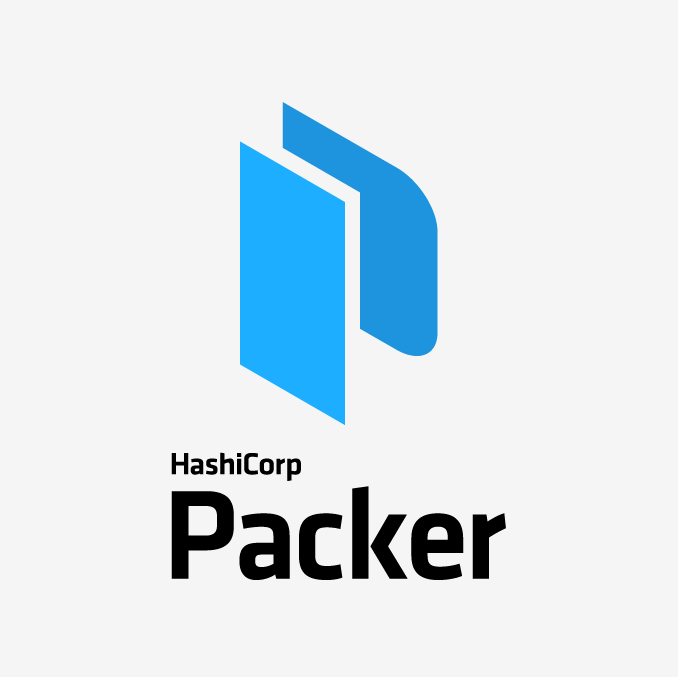The Foundation: People, Process, and Platform
People

While modern IT practices like DevOps have established the importance of cross-functional collaboration and continuous learning, these principles become absolutely critical for sustainable automation success. Organizations must ensure:
- Truly engaged cross-functional teams that span business units, network operations, security, and infrastructure - automation cannot succeed in silos.
- Clear ownership and responsibilities that persist beyond initial implementation.
- Continuous skill development and knowledge sharing to keep pace with evolving automation capabilities.
- Strong collaboration between development and operations teams to maintain and enhance automation workflows.
Process

- Testing and validation procedures need to extend beyond typical software testing. Automated infrastructure and workflows must be tested not just for functionality, but for idempotency, failure recovery, and interaction with existing systems.
- Version control and change management take on new dimensions with automation code. Teams must track not only the automation code itself, but also the state of infrastructure, configuration changes, and dependencies across multiple environments.
- Content sharing and reuse strategies become force multipliers. Well-designed, reusable automation modules can dramatically accelerate deployment while ensuring consistency across the enterprise.
Platform

- Centralized automation management isn't just about control - it's about providing a single source of truth for all automation activities while enabling appropriate decentralized execution where needed.
- Comprehensive analytics and insights become crucial for proving ROI and identifying optimization opportunities. Teams need visibility into automation performance, usage patterns, and business impact.
- Event-driven automation capabilities transform reactive operations into proactive management. The platform must enable automated responses to a wide range of triggers, from system alerts to business events.
- Integration with existing tools and systems is non-negotiable. The automation platform must work seamlessly with current investments in monitoring, ticketing, CI/CD, and other operational tools while enabling future technological adoption.
Understanding the Automation Stack
Modern infrastructure automation operates across five distinct but interconnected layers. While these layers can be automated independently, true digital transformation occurs when organizations implement comprehensive automation across all layers while understanding their interdependencies.1. Infrastructure Provisioning Layer


- Infrastructure deployment and configuration must now accommodate hybrid and multi-cloud environments while maintaining consistency and compliance. Modern provisioning tools enable organizations to define their infrastructure as code, ensuring reproducibility and scalability.
- Resource management and scaling capabilities need to respond dynamically to business demands. Automated provisioning must handle not just initial deployment, but ongoing resource optimization and cost management.
- Compliance and policy enforcement start at this foundational layer. Infrastructure definitions must incorporate security policies, compliance requirements, and governance standards from the beginning.
- Multi-cloud orchestration has become essential as organizations leverage different cloud providers' strengths. Automation at this layer must provide consistent workflows regardless of the underlying infrastructure provider.
2. Security Layer


- Zero-trust security implementation requires automated enforcement of security policies across all infrastructure components. Every resource must be verified, validated, and continuously monitored.
- Secrets and certificate management automation eliminates manual handling of sensitive credentials. Automated rotation, distribution, and revocation of secrets become crucial for maintaining security at scale.
- Access control and policy enforcement must be dynamic, context-aware and identity-based. Automation ensures that security policies are consistently applied and updated across the entire infrastructure.
- Security automation and incident response capabilities enable organizations to detect, respond to, and remediate security incidents at machine speed rather than human speed.
3. Network Layer

- Service discovery and mesh implementation require sophisticated automation to manage service-to-service communication effectively. Modern applications depend on dynamic service discovery and routing.
- Network configuration and policy management must be automated to maintain consistency and reduce human error. This includes automated validation of network changes and configuration compliance.
- Load balancing and traffic control automation ensures optimal resource utilization and application performance. Automated traffic management must respond to real-time conditions and demands.
- Network security automation integrates with other security tools to provide comprehensive protection. Automated network segmentation and policy enforcement are crucial for modern security architectures.
4. Runtime Layer

- Application deployment and scaling must be fully automated to support modern development practices. This includes automated testing, deployment verification, and rollback capabilities.
- Bare metal server, virtual machine & container orchestration has become central to modern application deployment. Automation at this layer must handle lifecycle management, scaling, and resource optimization.
- Service lifecycle management requires sophisticated automation to handle service dependencies, updates, and maintenance without disruption to business operations.
- Resource optimization automation ensures efficient use of computing resources while maintaining application performance and availability.
5. Application Layer


- Configuration management automation ensures consistent application settings across environments while maintaining compliance and security requirements.
- Service integration automation handles the complex interactions between different applications and services. This includes API management, data transformation, and service composition.
- Deployment automation coordinates complex application updates across multiple environments. This includes automated testing, validation, and rollback procedures.
- Event-driven operations enable applications to respond automatically to business events and changing conditions. This requires sophisticated automation to coordinate responses across multiple systems and services.
Event-Driven Automation: The Next Evolution

Event-driven automation represents a powerful approach that helps organizations proactively manage infrastructure and operations through real-time triggers and streamlined processes. By eliminating unnecessary manual tasks and enabling automated responses, event-driven workflows create a foundation for more responsive and resilient systems.
Automated Response Capabilities
- Immediate reaction to system alerts enables rapid issue mitigation and prevents small glitches from becoming service disruptions.
- Automated ticket handling connects seamlessly with ITSM tools and reduces manual overhead for support teams.
- Security incident response uses continuous monitoring and swift containment measures to protect critical assets.
- Performance optimization intelligently adjusts resource parameters so that applications meet user demands without sacrificing efficiency.
- Resource scaling dynamically allocates or frees up compute, storage, and network capacity in response to usage trends.
Business Benefits
- Reduced manual intervention allows teams to focus on strategic initiatives and accelerates decision-making.
- Faster incident resolution means that downtime is minimized and critical services remain consistently available.
- Proactive problem prevention detects anomalies early and applies automated remedies before issues escalate.
- Improved service delivery leads to better user experiences and higher customer satisfaction ratings.
- Enhanced security posture mitigates risks through automated policy enforcement, continuous scanning, and rapid incident response.
Implementation Strategy

A structured approach to introducing event-driven automation helps enterprises gain maximum value while maintaining governance and control. Beginning with focused pilots and expanding gradually ensures that teams can learn, adapt, and scale efficiently. The optimal implementation strategy is aligned with the customer’s exact needs, focusing primarily on the specific business case, customer expectations, and, not least, the corporate culture embraced by the employees. Based on this insight and our experience implementing automation solutions for enterprises, we recommend a structured approach:
1. Assessment and Planning
- Evaluate current infrastructure and processes to pinpoint automation targets and uncover inefficiencies.
- Identify automation opportunities that bring clear, tangible benefits and streamline repetitive tasks.
- Define success metrics so that teams understand how to measure progress and justify investments.
- Plan initial pilot scope based on high-impact use cases that can demonstrate immediate value, e.g. a Proof-of-Concept which focuses on the exact use case and is based on SMART targets.
2. Pilot Implementation
- Start with well-defined, manageable projects that allow teams to gain confidence and refine best practices.
- Focus on measurable outcomes by tracking deployment frequency, incident rates, or other relevant KPIs.
- Build team expertise through collaboration between infrastructure, security, and development groups.
- Document lessons learned so that future iterations benefit from pilot insights and success stories.
3. Scaling and Integration
- Expand automation scope to cover larger projects, business-critical services, and cross-functional workflows.
- Integrate with existing systems like CI/CD pipelines, monitoring platforms, and IT service desks for seamless execution.
- Standardize workflows to establish consistent naming conventions and processes, avoiding confusion across teams.
- Build reusable components and templates that can be shared throughout the organization to accelerate further automation.
4. Enterprise-Wide Adoption
- Establish automation standards that define acceptable coding patterns, security requirements, and operational guidelines.
- Create shared content repositories to house reusable modules, documentation, and runbooks in a centralized location.
- Implement governance frameworks that monitor policy adherence, track usage, and manage regulatory compliance.
- Develop team capabilities by investing in continuous learning programs, training materials, and peer mentoring.
Best Practices for Success

Ensuring effective enterprise automation requires consistent methodologies and a culture that prioritizes knowledge-sharing, continuous improvement, and strict adherence to security and compliance obligations.
Infrastructure as Code Best Practices
- Maintain infrastructure definitions in version control to ensure transparency and rollback capabilities.
- Implement comprehensive testing that validates both functional and non-functional aspects of newly provisioned resources.
- Use modular, reusable code to simplify maintenance and avoid duplicating efforts across different projects.
- Use abstractions and pre-defined templates when calling the reusable code modules. This allows changing underlying infrastructure resources without having to refactor the end user's codebase, e.g. when migrating between cloud hyperscalers.
- Follow security best practices by embedding compliance checks, encryption, and access restrictions directly into the codebase.
Automation Management
- Centralize automation content to foster collaboration and deliver a single source of truth for all teams.
- Implement role-based access control so that workflows remain secure and only authorized users can make changes.
- Monitor automation performance by tracking execution times, failures, and resource consumption patterns.
- Regular security audits help teams maintain a strong security posture and detect vulnerabilities or configuration drift.
Team Development
- Invest in continuous learning by offering hands-on labs, certifications, and resource libraries to keep skills up-to-date.
- Foster collaboration through cross-functional meetings, code reviews, and open communication channels.
- Share knowledge and best practices so that teams can easily replicate successful use cases and avoid common pitfalls.
- Build internal expertise by identifying champions who can lead pilot initiatives and mentor others along the way.
Measuring Success

Defining and tracking clear metrics is crucial for showcasing the tangible impact of event-driven automation on both technology outcomes and broader business objectives.
Key Performance Indicators
- Deployment frequency reflects how quickly new features or updates are delivered to production environments.
- Mean time to recovery (MTTR) shows how fast services return to normal after outages or performance problems.
- Change failure rate highlights the stability of the automation process and the robustness of validation practices.
- Lead time for changes illustrates how promptly developers can push code from commit to production.
- Resource utilization measures whether infrastructure capacity aligns with business demands and cost goals.
- Cost optimization examines how automation influences operating expenses and overall budget efficiency.
Business Impact
- Accelerated time to market enables faster rollouts of new products or features, increasing competitive advantage.
- Reduced operational costs provide a clear return on investment through streamlined workflows and fewer manual tasks.
- Improved service quality fosters higher availability, better user experiences, and reduced customer churn.
- Enhanced security posture creates resilience against threats and improves compliance through automated safeguards.
- Increased team productivity allows personnel to focus on strategic, value-driven initiatives rather than routine maintenance.
Looking Ahead

Enterprises that embrace event-driven automation and Infrastructure as Code throughout their technology stack can expect significant gains in performance, agility, and innovation. Ongoing trends will continue to reshape the automation landscape:
- AI-enhanced automation capabilities can predict issues before they arise and deliver more sophisticated self-healing functionality.
- Advanced event-driven architectures extend automated triggers across diverse systems and complex workflows.
- Improved security automation embeds real-time threat detection, alerting, and remediation in every layer of the infrastructure.
- Enhanced cross-platform integration includes seamless interoperability between on-premises, multi-cloud, different servers shapes and containerized deployments.
- Deeper cloud-native integration allows teams to leverage built-in cloud services for effortless provisioning, monitoring, and management.
By following these structured strategies and best practices, enterprises can harness the transformative power of event-driven automation and evolve their operational model to meet the rapid demands of modern business.
Conclusion
















